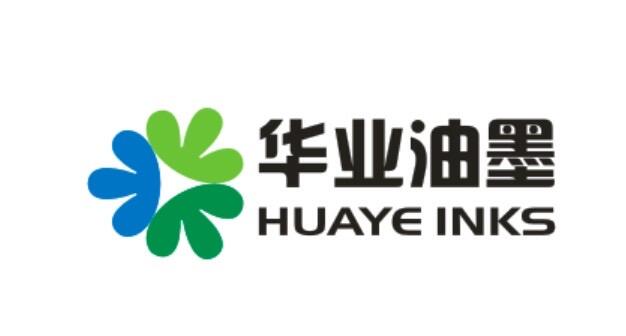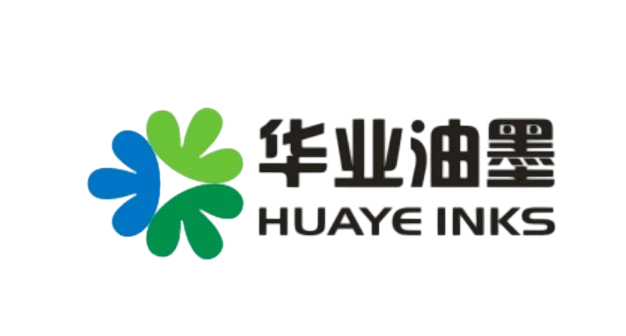Why Non-Toxic Ink Is Critical for Baby and Maternal Products
Vulnerable Physiology of Infants and Risks of Chemical Exposure
Babies take in chemicals at about ten times the rate of adults because their bodies haven't fully developed ways to process toxins yet, plus their skin is much thinner. This makes little ones extra vulnerable even when exposed to tiny amounts of harmful substances (Ponemon Institute 2023). The ink used on things like baby clothes often contains leftover solvents, and some toy packaging has dangerous heavy metals too. These can really hurt developing bodies. For instance, certain dyes in baby bibs release formaldehyde which causes skin rashes in around one out of every four newborns. Meanwhile, volatile organic compounds from labels on products meant for pregnant women might actually raise stress levels during pregnancy (Journal of Pediatric Health 2024).
Long-Term Health Implications of Toxic Ink in Baby Clothing, Toys, and Accessories
Studies from the CDC back in 2023 found that kids who grow up around certain harmful chemicals in cheap inks tend to show developmental delays at around age five, affecting about one child out of every 150. Many parents might not realize this risk when buying products for their little ones. For instance, those colorful screen printed designs on soft plush toys often contain phthalates which have been connected to asthma problems in children. Worse still, bottles decorated with cadmium-based pigments leave traces in home dust that babies can accidentally swallow. Looking at research published last year, scientists discovered something alarming too. Babies who sucked on pacifiers contaminated with lead from printing inks performed about 12 percent worse on thinking tests once they reached school age. These findings really put into question how safe our everyday items truly are from cradle to grave.
Global Safety Standards for Non-Toxic Ink in Baby Products
Regulators worldwide have established stringent frameworks to ensure ink used in baby and maternal products meets non-toxic benchmarks. These standards govern chemical composition, migration potential, and supply chain accountability to protect vulnerable populations.
ASTM F963: U.S. Toy Safety Standard and Its Impact on Ink Compliance
The ASTM F963 standard actually puts pretty tight restrictions on heavy metals in toy inks, limiting them to below 100 parts per million. A recent look at data from the Consumer Product Safety Commission in 2023 showed something interesting too. When companies follow these guidelines properly, it cuts down the risk of toxic exposure by about 87% for little kids who are three years old or younger. For manufacturers making toys, there's another important step they need to take. They have to run tests where they simulate what happens when a child's saliva comes into contact with the ink. This helps determine if the colors will stay put even when babies mouth their toys, which is exactly why these standards matter so much in the first place.
EN71: European Chemical Safety Requirements for Children’s Materials
EN71-3:2019 restricts 19 hazardous elements, including arsenic and mercury, to no more than 10 ppm in surface coatings. In contrast to U.S. rules, EN71 mandates annual re-certification for imported goods and evaluates ink adhesion to prevent flaking after repeated washing—a crucial safeguard against accidental ingestion.
CPSIA Regulations Limiting Heavy Metals in Infant and Maternal Goods
The Consumer Product Safety Improvement Act (CPSIA) caps lead in surface coatings at 90 ppm, effective 2023. This applies to items like bibs, breast pump parts, and textile prints. Compliance must be verified by third-party labs using ICP-MS, a method capable of detecting contaminants at 0.001 ppm sensitivity.
ACMI AP Certification for Safe Printing and Art Materials
The AP seal from the Art and Creative Materials Institute basically means these inks are considered safe even when people come into contact with them over long periods. To get certified, manufacturers must test their products through rigorous 90 day studies looking at how much gets absorbed through breathing and skin contact. The ink formulations also need to keep volatile organic compound emissions under control at just 50 micrograms per cubic meter air space, which is actually about three quarters less than what's typical in regular inks. Pretty impressive stuff really. And hospitals across America have taken notice too - more than ninety two percent of all neonatal units now insist on seeing that ACMI AP certification before allowing any printed material near mothers or babies during maternity stays.
Safe Chemical Composition of Inks for Baby and Maternal Products
Elimination of Lead, Cadmium, Mercury, and Other Heavy Metals
Non-toxic inks for baby products exclude heavy metals known to impair development. Manufacturers adhere to CPSIA requirements, ensuring lead levels remain at or below 90 ppm. Iron oxide pigments have replaced cadmium-based colorants in products like rattles and bibs, while mercury-free dyes eliminate neurotoxic risks in items frequently mouthed.
Low-VOC and Zero-VOC Formulations to Protect Indoor Air Quality
Water-based and UV-curable inks reduce VOC emissions by 78% compared to solvent-based alternatives (EPA 2023). Innovations such as solvent-based NTNK ink systems eliminate toluene and ketones, which is essential for nursery items like waterproof mattress covers where off-gassing can compromise infant respiratory health.
Plant-Based and Food-Grade Pigments in Non-Toxic Ink Development
Pigments derived from beetroot and spirulina comply with FDA 21 CFR §73 for indirect food contact, making them ideal for silicone teething rings. These natural alternatives avoid synthetic coal tar dyes while maintaining durability through 50+ industrial washes without leaching.
Avoiding Phthalates, Formaldehyde, and Hazardous Solvents
Reactive acrylate binders replace phthalate plasticizers in pacifier prints, providing flexibility without endocrine disruption. Dual-cure ink systems ensure complete polymerization, preventing formaldehyde release in breast pump components exposed to steam sterilization.
Testing, Certification, and Supply Chain Transparency for Compliance
Laboratory Testing for Trace Chemicals in Ink Used on Baby Products
Advanced methods like gas chromatography and mass spectrometry detect trace heavy metals and VOCs in inks. Third-party labs verify compliance with ASTM F963 and EN71 standards. One study found that 89% of non-certified inks contained detectable phthalates, emphasizing the importance of independent lab validation.
Migration Testing Simulating Skin Contact and Oral Exposure
To assess real-world risk, inks are tested under conditions mimicking infant mouthing or skin contact. Fabric samples are immersed in artificial saliva or sweat for over 24 hours to measure leaching. A 2022 ASTM study showed plant-based, migration-resistant inks reduced solvent transfer by 97% compared to traditional formulations.
Batch-Specific Certification and Third-Party Verification Processes
Each production batch undergoes independent review to prevent contamination. ACMI AP certification, for instance, requires annual facility audits and random sampling. Companies using blockchain-enabled traceability report 40% faster compliance audits, according to a 2023 supply chain transparency report.
Documentation and Traceability in the Supply Chain
Digital tracking systems monitor ink ingredients from origin to final product. QR codes on packaging allow parents to access safety certificates and test results instantly. Brands using ISO 9001-compliant traceability resolve compliance issues 65% faster, ensuring consistent adherence to global safety standards.
Innovations and Future Trends in Non-Toxic Ink Technology
Biodegradable and Compostable Ink Systems for Sustainable Baby Products
In response to sustainability demands, manufacturers are adopting bio-based inks made from plant cellulose and algae pigments. These formulations decompose within 12 weeks in industrial composting environments—versus over 450 years for petroleum-based inks—eliminating microplastic pollution while maintaining colorfastness for washable garments (Ponemon 2023).
Smart Labeling with QR Codes Using Safe, Transparent Inks
The latest generation of product labels now incorporate UV curable inks that are completely non toxic and . These materials are used to print scannable QR codes. Through this method, consumers can instantly access ingredient explanations, factory certifications, and safety data. According to a 2024 material safety report, using QR codes for labeling has reduced parental exposure risks by 63% due to fewer repeat print demands and outdated warnings. This not only improves safety, but also makes information more conveniently accessible.
Global Harmonization of Non-Toxicity Standards for Infant and Maternal Items
Industry players are working hard to bring together different international standards for testing how inks migrate in substances such as saliva, sweat, and breast milk. The new Global Safety Framework (GSF) brings together CPSIA regulations on heavy metals, European EN71 rules about solvents, and American Printing House certifications all under one standard. What this means practically is that companies could save around 35 to 40 percent on those repetitive tests they currently pay for separately. More importantly, it helps fill holes in regulations when baby product manufacturers sell across borders online. According to recent research published in the 2024 report on materials used in footwear manufacturing, these changes represent a significant step forward for safety compliance.
FAQ
Why is non-toxic ink important for baby products?
Non-toxic ink is crucial for baby products to prevent exposure to harmful chemicals that can affect a child's development and health. Babies have more sensitive skin and systems, making them more vulnerable to toxins.
What are the risks of using toxic ink in baby items?
Toxic ink can lead to skin rashes, respiratory issues, and developmental delays in children. It can also contribute to long-term health problems when children are exposed to harmful chemicals from ink in toys, clothing, and other products.
What are the global safety standards for non-toxic ink in baby products?
Standards like ASTM F963 in the U.S., EN71 in Europe, and CPSIA regulations help ensure inks used in baby products meet safety benchmarks by limiting harmful chemicals like heavy metals and VOCs.
How do manufacturers ensure ink used in baby products is safe?
Manufacturers test inks through methods like gas chromatography and migration testing to ensure they don't contain harmful chemicals and won't pose a risk during everyday use. Certifications like ACMI AP and batch-specific testing further verify safety.
What innovations are being made in non-toxic ink technology?
Innovations include biodegradable and compostable inks, plant-based pigments, smart labeling using QR codes, and global harmonization of safety standards to enhance product safety and sustainability.
Table of Contents
- Why Non-Toxic Ink Is Critical for Baby and Maternal Products
- Global Safety Standards for Non-Toxic Ink in Baby Products
- Safe Chemical Composition of Inks for Baby and Maternal Products
- Testing, Certification, and Supply Chain Transparency for Compliance
- Innovations and Future Trends in Non-Toxic Ink Technology
- FAQ



